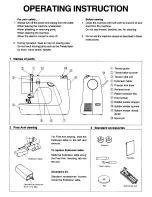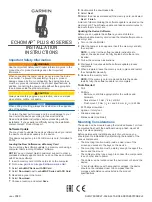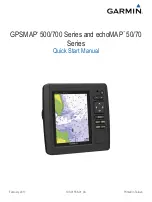
Chapter 2
Hardware Overview
NI PCIe-1433 User Manual and Specifications
2-6
ni.com
enable signal from the camera. The active line region selects the
starting line and number of lines to be acquired relative to the assertion
edge of the vertical (or frame) enable signal.
•
Region of interest
—The NI 1433 uses a second level of active pixel
and active line regions for selecting a region of interest. Using the
region-of-interest circuitry, the device acquires only a selected subset
of the acquisition window.
DMA Controllers
The NI 1433 uses onboard direct memory access (DMA) controllers
to transfer data between the device and host memory. Each of these
controllers supports scatter-gather DMA, which allows the DMA controller
to reconfigure at runtime. The NI 1433 can perform continuous image
transfers directly to either contiguous or fragmented memory buffers. The
NI-IMAQ driver software efficiently programs the DMA engines while
providing an easy-to-use high-level interface.
PCIe Interface
The NI 1433 is compliant with PCI Express 1.1 specifications. The NI 1433
is intended for a x4 PCIe slot. It does not fit properly into a x1 PCIe slot.
However, the NI 1433 does fit into, and can be used in, a x8 or x16
PCIe slot. Using a smaller width device in a larger width slot is called
up-plugging. When up-plugging, some motherboards only support plug-in
devices at the x1 data rate. If you plan to use the NI 1433 in an up-plugging
configuration, with a camera that produces data faster than 200 MB/s,
verify with your computer manufacturer that your motherboard supports a
x4 plug-in device at a x4 data rate in the PC expansion slot you plan to use.
Start Conditions
The NI 1433 can start acquisitions in the following ways:
•
Software control
—The NI 1433 supports software control of
acquisition start. You can configure the NI 1433 to capture a fixed
number of frames. Use this configuration for capturing a single frame
or a sequence of frames.
•
Trigger control
—You can start an acquisition by enabling external
or RTSI bus trigger lines. Each of these inputs can start a video
acquisition on a rising edge or a falling edge.
















































